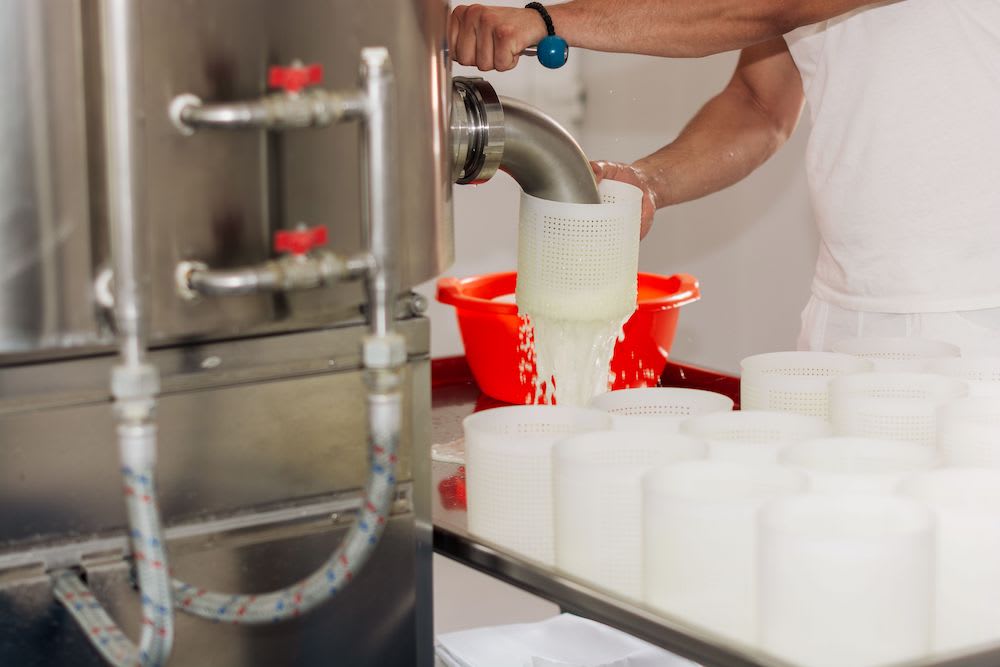- Published 8 Mar 2024
- Last Modified 8 Mar 2024
- 5 min
RTD Sensors in Dairy Processing: Ensuring Quality & Safety
Explore how RTD sensors revolutionise dairy quality and safety during processing, ensuring optimal temperature for a variety of dairy products in Australia.

In the intricate world of dairy production, the quality of dairy products such as cheese, milk, and yoghurt significantly depends on the meticulous control of processing conditions, among which temperature plays a paramount role. These delicate foods, pivotal to diets worldwide, necessitate stringent refrigeration throughout the supply chain to preserve freshness, taste, and nutritional value.
To fully understand the significance of maintaining optimal conditions in dairy product quality and safety, we’ll delve into the critical role of a specific thermocouple: the Resistance Temperature Detector (RTD) sensor, with a particular focus on the PT100 temperature sensor.

Why is Temperature Critical in Dairy Processing?
Temperature control is more than just a regulatory mandate in the dairy industry; it forms the bedrock of product integrity and safety. The nuanced balance of temperature is crucial, as its fluctuations can drastically impact the sensory and physical properties of dairy products, alongside their microbial safety. For example, during the cheese-making process, temperatures that deviate from the optimal range can result in an inconsistent texture, affecting the cheese's firmness or creaminess. Similarly, yoghurts subjected to inappropriate temperatures may not achieve the desired fermentation level, leading to off-flavours or inadequate texture development.
On the microbial front, the significance of temperature control becomes even more pronounced. Dairy products, being rich in nutrients, provide an ideal breeding ground for bacteria. If milk, for example, is stored at temperatures that are too warm, it accelerates the growth of pathogenic bacteria, such as Listeria or E. coli, which can lead to serious foodborne illnesses. Conversely, temperatures that are excessively cold, though less likely to foster bacterial growth, can damage the product's structure, leading to the separation of fats and proteins in milk or affecting the ripening process of cheeses, ultimately compromising their quality and taste.
Thus, the implementation of precise temperature monitoring through advanced technologies like RTD sensors is not just about adhering to regulations; it's a critical measure for ensuring the safety, quality, and consistency of dairy products. By maintaining strict temperature controls, dairy producers can protect consumers from foodborne illnesses, uphold the sensory attributes of their products, and contribute to the sustainability of the dairy industry.

Understanding RTD Sensors
Resistance temperature detectors, with the PT100 temperature sensor being the most ubiquitous, offer an unparalleled solution for real-time temperature monitoring. These sensors operate on the principle that the resistance of a metal, typically platinum, changes predictably with temperature. The PT100 sensor, named for its 100-ohm resistance at 0°C, provides precise temperature readings essential for quality assurance and regulatory compliance in dairy processing. The advantages of RTD sensors over other temperature monitoring devices include higher accuracy, stability, and repeatability, making them invaluable tools in the dairy industry.
Application of RTD Sensors in Dairy Product Processing
The application of RTD sensors in dairy processing is wide-ranging and critical to ensuring product quality. During milk pasteurisation, RTD sensors monitor temperatures to ensure the destruction of harmful bacteria without compromising the milk's nutritional and sensory qualities. In cheese making, they help in maintaining the precise temperatures necessary for different stages of fermentation and ageing, crucial for achieving the desired flavour and texture. Similarly, in yoghurt production, RTD sensors facilitate the control of fermentation temperatures, ensuring the consistency and quality of the final product.
Improving Consistency and Quality with RTD Sensors
The integration of RTD sensors into dairy processing not only enhances the quality of dairy products but also ensures consistency across batches. This consistency is vital for brand reputation and consumer trust, as customers expect the same high-quality experience with every purchase. Precise temperature regulation enabled by RTD sensors also plays a crucial role in extending the shelf life of dairy products, reducing waste, and improving the overall sustainability of dairy operations.
Revolutionising Dairy Processing with Advanced RTD Sensor Technology
The adoption of RTD sensors, particularly the PT100 temperature sensor, is a game-changer in the dairy industry, offering producers a reliable method for enhancing product quality through precise temperature control. These sensors not only help achieve consistency and meet regulatory standards but also provide a competitive edge by ensuring the superior quality of dairy products. Dairy producers, from dairy farms to dairy product manufacturers in Australia and beyond, are encouraged to consider the integration of RTD sensors into their operations for long-term benefits.
Popular Inductive RTD Sensor Brands
Electrotherm
Electrotherm's dedication to innovation and quality makes it a reliable choice for dairy processing applications, where precise temperature control is paramount.
Related links
- The Importance of Air Quality Monitors in F&B Facilities
- Enhancing Electronic Design: The Advantages of PCB Prototypes
- The Role of HVAC Systems in Mining Air Quality & Humidity
- Texas Instruments DLPNIRNANOEVM, Display Development Kit Digital Light Processing(DLP) Evaluation Module With DLP2010NIR
- The Importance of Air Quality Monitors in Enhancing Passenger Comfort in Transit
- Audio Cable
- Drum Heaters
- Soldering Essentials for DIY and Pros